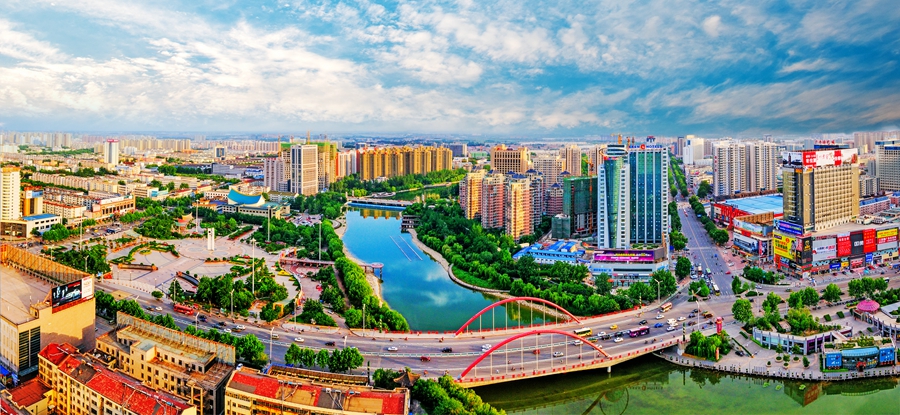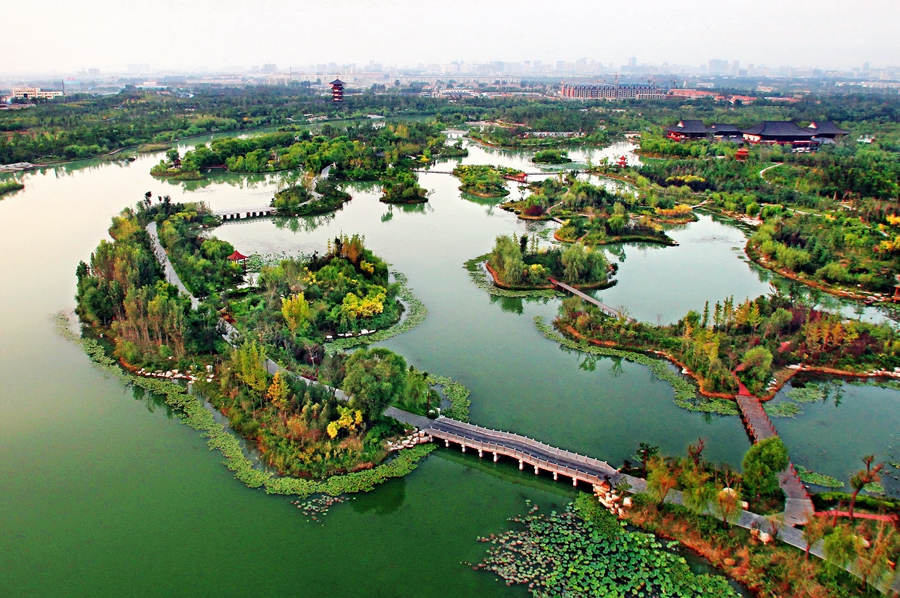Weifang
(chinadaily.com.cn)| Updated : 2023-01-10
Print Print
The city of Weifang, Shandong province. [Photo provided to chinadaily.com.cn]
Located in the center of the Shandong peninsula as well as in the center of its urban agglomerations, Weifang is renowned as being the World Capital of Kites. An international kite festival is held every year in the city.
With a total land area of 15,800 square kilometers, Weifang comprises of four districts, six cities and two counties – Weicheng district, Hanting district, Fangzi district, Kuiwen district, Linqu County, Changle County, Qingzhou City, Zhucheng City, Shouguang City, Anqiu City, Gaomi City and Changyi City.

Weifang - World Capital of Kites [Photo provided to chinadaily.com.cn]
Weifang, neighbored to the south by Yishan Mountain, and to the north by the Bohai Sea, is known as "the corridor of Eastern Shandong".
It is a pivotal city of nation-wide highway transportation, with a distance of 183 kilometers from Jinan, the capital of Shandong, and of 410 kilometers from Beijing, the capital of China.
There are a large number of national and provincial highways running through Weifang, such as Jinan-Qingdao, Qingdao-Laiwu, Weifang-LaiWu, Dongying-Qingdao and Rongcheng-Wuhai. The railway network in Weifang comprises of the Jiaozhou-Jinan, Jiaozhou-Xinyi and Dajiawa-longkou lines, all of which pass through the city.
Weifang Simedarby harbor has an annual throughput of more than 10 million tons, and a dock of ten thousand tons is currently under construction . Weifang airport has launched flight routes to Beijing, and Shanghai. Furthermore, it is one of the four main airmail centers in China.
Facing the sea, Weifang is situated in the monsoon region of the North Temperate Zone, which has a warm temperate and sub humid continental monsoon climate with four clearly distinct seasons. The average annual temperature is 12.3℃, and the average annual precipitation is about 650 mm.

Bailang Luzhou Wetland Park in Weifang, Shandong. [Photo provided to chinadaily.com.cn]
Weifang is rich in resources. With 4,460 square kilometers of shallow sea, tideland and coastal plain, Weifang possesses resourceful coastal regions.
There is 1,100 square kilometers in brine area under the coastal ground with a net storage of 5.8 billion square meters. The average density is 2-6 times that of sea water, providing a natural advantage for developing the salt industry as well as the salt chemical industry.
Weifang is the biggest salt and salt chemical industry base nationwide. With 42 thousand hectares of salt area, annual productivity over 6 million tons taking up fifth of national gross productivity and there being 50 kinds of salt products, Weifang can produce one million tons of Calcined soda each year, ranking first nationwide in terms of quantity, quality and export.
There are more than 70 thousand tons of industrial bromide and magnesium chloride in Weifang, accounting for more than 90 percent of the compounds in China. More than 58 kinds of mineral resources have been found, including gold, silver, iron, coal, oil, sapphire, barite, zeolite, bentonite, granite and mineral water.
Of these mineral resources, 36 kinds have been proved reserves, in which 12 kinds rank first in Shandong province. Moreover, the reserves of sapphire and underground brine rank top in China.
Weifang is a traditional agricultural city, being one of the main places for agricultural and sideline products. A succession of technological and industrial major products with certain market advantages and market potency has been formed throughout the city, including grain, cotton, oil producer, tobacco, cocoon, fruit, seafood, vegetable, edible mushroom, flower and broiler chicken.
More than 1,200 leading enterprises of various kinds have been set up. Besides this, a large amount of famous and excellent producing bases have been built, such as a base for vegetables in Shouguang city, broiler chicken in Zhucheng city, honey peach in Anqiu city, edible mushrooms in Qingzhou city, and watermelon and boiler chicken in Changle city.
Weifang is an important base for producing, processing and exporting quality agricultural products in China, with exports of poultry and vegetable taking up one third and a fifth of the national total respectively.
